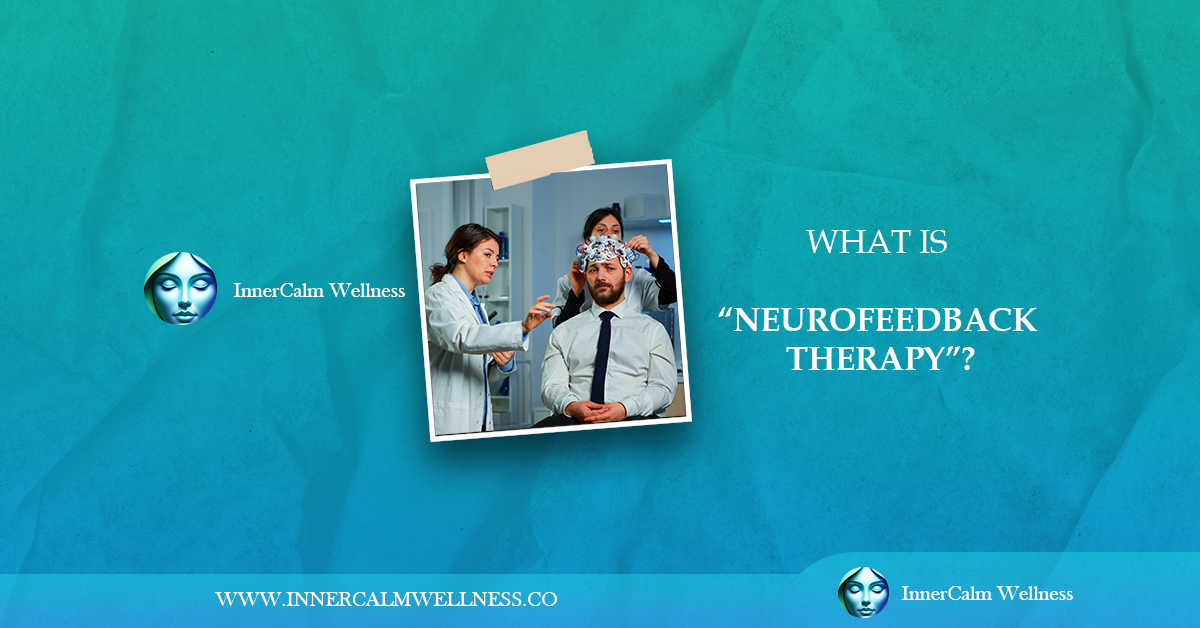
In recent years, many people have turned to neurofeedback therapy as a safe and non-invasive option for addressing various mental health and neurological challenges. Neurofeedback therapy is becoming increasingly popular as people seek natural, drug-free approaches to improving mental clarity, emotional balance, and overall well-being. But what exactly is neurofeedback therapy, and how does it work? In this article, we will explore the basics of neurofeedback therapy, the different types of neurofeedback, potential side effects, and how to find neurofeedback therapy near you.
Understanding Neurofeedback Therapy
Neurofeedback therapy is a specialized form of biofeedback that helps individuals learn to regulate their brain activity. This process involves monitoring brainwave patterns using sensors placed on the scalp, which then feed information to a computer. The computer provides real-time feedback about the brain’s activity, allowing the individual to see and adjust their brain function over time.
Through neurofeedback sessions, individuals can learn to optimize their brain activity, promoting relaxation, focus, and emotional stability. Neurofeedback is commonly used to support people dealing with anxiety, depression, ADHD, PTSD, migraines, and even insomnia. By training the brain to function more efficiently, people often find relief from these symptoms and experience an overall improvement in mental wellness.
Types of Neurofeedback
There are several types of neurofeedback, each with its own methods and benefits:
- EEG Neurofeedback: The most common type, EEG neurofeedback focuses on the brain’s electrical activity, particularly its wave patterns (such as alpha, beta, theta, and delta waves). Through EEG neurofeedback sessions, people can work to balance these brainwaves, which is beneficial for conditions like ADHD, anxiety, and sleep issues.
- HEG Neurofeedback (Hemoencephalography): This form of neurofeedback targets blood flow and oxygen levels in the brain, measuring these factors to optimize cognitive performance. HEG neurofeedback is often used for managing symptoms of migraines and headaches, as well as for improving focus and mental clarity.
- Low Energy Neurofeedback System (LENS): LENS uses very low-energy radio frequencies to promote brainwave adjustments. This type of neurofeedback is typically brief and aims to help with symptoms related to trauma, chronic pain, and other emotional imbalances.
- Infra-Low Frequency (ILF) Neurofeedback: Focusing on very slow brainwave frequencies, ILF neurofeedback is often used for those with trauma histories or complex conditions, as it works at a deeper, more subtle level than traditional EEG neurofeedback.
Each of these types of neurofeedback has its strengths, and the choice often depends on the specific condition being addressed. Consulting a trained practitioner can help determine the best approach for you.
Are There Any Side Effects of Neurofeedback Therapy?
Neurofeedback is generally regarded as safe, and most people experience positive results. However, some may experience mild neurofeedback side effects as the brain adjusts to new patterns. Common side effects may include temporary fatigue, slight headaches, or mild emotional shifts. These side effects are usually short-lived and are part of the adjustment process as the brain becomes more balanced.
It’s essential to work with a qualified neurofeedback therapist to ensure that the therapy is administered correctly and tailored to individual needs. Proper supervision and careful adjustments during neurofeedback sessions can help minimize side effects.
Can Neurofeedback Damage Your Brain?
A common question people have is whether neurofeedback can damage the brain. The answer is no—when conducted by trained professionals, neurofeedback therapy does not damage the brain. Neurofeedback is designed to work with the brain’s natural processes, and reputable practitioners follow strict guidelines to ensure the safety and well-being of their clients. Neurofeedback is non-invasive, drug-free, and is generally considered one of the safest methods for brain training. By improving brainwave regulation, neurofeedback therapy aims to enhance, not harm, cognitive and emotional function.
Benefits of Neurofeedback Therapy
Neurofeedback therapy offers various benefits, including:
- Enhanced Focus and Attention: Neurofeedback is particularly effective for those struggling with ADHD, helping to increase attention and decrease impulsive behaviors.
- Reduced Anxiety and Depression: By regulating brainwaves, neurofeedback can help calm the mind, reduce anxiety, and stabilize mood.
- Improved Sleep: People with insomnia or irregular sleep patterns often find relief through neurofeedback, as it helps promote relaxation and a balanced state of mind.
- Pain Management: Neurofeedback can reduce chronic pain by adjusting brainwave activity associated with pain perception.
Finding Neurofeedback Therapy Near Me
If you’re considering neurofeedback therapy, finding a reputable provider near you is essential. Look for practitioners certified by recognized organizations, such as the Biofeedback Certification International Alliance (BCIA), to ensure you receive high-quality care. Many clinics, including mental health and wellness centers like Inner Calm Wellness, offer neurofeedback therapy as part of their holistic services. Checking reviews, consulting with practitioners, and asking about their specific approach and experience can help you choose a provider that aligns with your wellness goals.
Is Neurofeedback Right for You?
Neurofeedback therapy is a promising option for anyone looking to improve mental wellness, manage emotional challenges, or address neurological issues without the use of medication. With several types of neurofeedback available, finding the right approach can make a significant difference in the therapy’s effectiveness.
However, as with any therapeutic intervention, neurofeedback may not be suitable for everyone. It’s essential to discuss your unique needs with a qualified therapist to determine the most appropriate treatment plan.
Conclusion
Neurofeedback therapy provides a powerful, non-invasive way to promote balance and mental clarity by harnessing the brain’s own ability to regulate itself. Through neurofeedback sessions, people can work to improve symptoms related to anxiety, depression, ADHD, and more. Understanding the different types of neurofeedback and the possible side effects can help you make an informed decision. If you’re interested in trying neurofeedback, searching for “Neurofeedback Therapy Near Me” can be a good starting point to find trusted providers in your area. With the right guidance and dedication, neurofeedback therapy has the potential to become a valuable tool in your mental wellness journey.